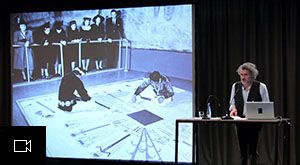Freedom in the Bush of Ghosts

In Amos Tutuola’s second novel My Life in the Bush of Ghosts (1954), the young protagonist is running away from slave-catchers when he accidently crosses the border of reality as he knows it. His flight from bondage, however, does not earn him freedom. Rather, he finds himself in an absurd, liminal world of speaking symbols and delirious phantasms, in which the entire regime of meaning-production constantly shifts.
Freedom in the Bush of Ghosts is a conference accompanying Parapolitics: Cultural Freedom and the Cold War, an exhibition tracing how the many meanings of Modernism were deployed in the struggle for cultural hegemony during the Cold War. It treats the history of one of the CIA’s secretly funded front organizations, the Congress for Cultural Freedom (CCF), to consider the ideological contra dictions and moral ambiguities of advocating freedom and transparency by channels that are themselves removed from democratic accountability. The “bush of ghosts” in the conference title refers to a place beyond orderly sense, a realm outside public knowledge, where one’s relation to the world breaks down and is founded anew. Examining the ideological echoes of the Cold War through cultural debates, the conference gathers artists and historians to reconsider the political appropriation of aesthetic form and engage the spectres of modernism as they shape-shifted in the course of the twentieth century.
With Alessandro Balteo-Yazbeck, Clare Davies, Kodwo Eshun, Anselm Franke, Nida Ghouse, Paz Guevara, Angela Harutyunyan, Patrick Iber, Nataša Ilić, Alexander Keefe, Christian Kravagna, Antonia Majaca, Jaleh Mansoor, Museum of American Art in Berlin
